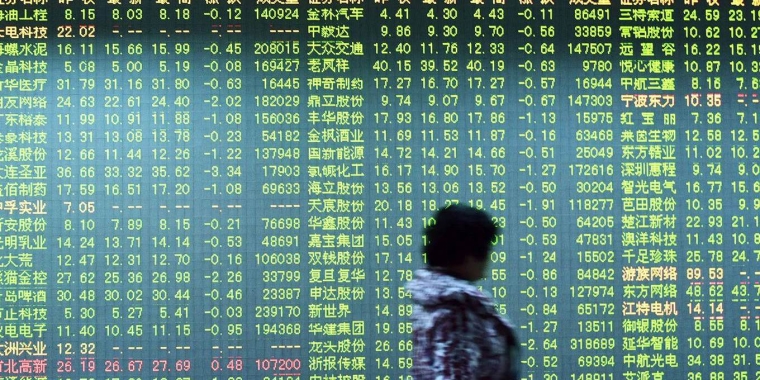
There has always been a fixation on Chinese economic growth. And with good reason.
For a large economy, sustaining annual growth rates of 10% over several decades is unprecedented.
And yet that’s exactly what China did from 1980 to 2011.
But now the miracle is over.
Since 2012, annual growth has slowed to 7.2%, and Premier Li Keqiang’s recent annual “work report” set a growth target of just 6-6.5% for 2019.
For the vast legions of China doubters, this is a “gotcha” moment. After all, the lower bound of the premier’s target implies a 40% deceleration from the “miracle” trend. This seems to vindicate warnings of the dreaded “middle-income trap” – the tendency of fast-growing developing economies to revert to a much weaker growth trajectory just when they get their first whiff of prosperity.
The early work on this phenomenon was precise in terms of what to expect: as per capita income moved into the $16,000-$17,000 range (in 2005 dollars at purchasing power parity), a sustained growth deceleration of around 2.5 percentage points can be expected. With China having hit that income threshold in 2017, according to International Monetary Fund estimates, its post-2011 slowdown looks all the more ominous.
But one of the first things taught to economics graduate students, even back in my day, is to be wary of the perils of data mining. And the middle-income trap is a classic example of the pitfalls of endless number crunching. Give me a database and a powerful computer, and I can “validate” almost any economic relationship masquerading as an analytical conjecture. There are five key reasons to dismiss the now-widespread diagnosis that China is ensnared in the middle-income trap.
First, a middle-income trap may not even exist. That is the conclusion of Lant Pritchett and Lawrence Summers’s rigorous empirical study covering a broad cross section of 125 economies from 1950 to 2010. The best they could come up with is a strong tendency for growth discontinuities and mean reversion. At the recent China Development Forum in Beijing, Summers went further in assessing likely outcomes in rapidly growing developing economies, dubbing any mean-reverting slowdown as merely a tendency to close a “post-miracle gap.” Needless to say, the statistical regularity of such periodic growth gaps is very different from the permanent quagmire of a growth trap.
Second, a fixed trap threshold of $16,000-$17,000 may be a great literary device, but it makes little sense in a dynamic global economy. Since early research on the middle-income trap was published in 2012, the world economy has grown by about 25% – presumably boosting the moving target of a middle-income threshold by a comparable magnitude over that period. Largely for that reason, recent research has couched the trap not in terms of an absolute threshold, but as relative convergence to high-income countries. From this perspective, danger looms when developing economies’ per capita income approaches 20-30% of the level in high-income economies. Given that China will hit about 30% of America’s per capita GDP (in PPP terms) in 2019, it must be time to worry!
Third, not all growth slowdowns are alike. A country’s GDP is a broad aggregation of a multiplicity of activities across sectors, businesses, and products. Structural shifts from one sector to another can give the appearance of a growth discontinuity that may be nothing more than the outcome of a deliberate rebalancing strategy. This is very much the case with China today, given its shift from higher-growth manufacturing and other “secondary” industries to slower-growing services, or “tertiary” industries. To the extent that this shift is the intended result of China’s strategic rebalancing, a growth slowdown is far less alarming.
Fourth, the daunting challenges that China faces at this point in its economic development are far more important than whether its slowdown is a gap or a trap. What comes after the catch-up to advanced economies operating on the technological frontier? This is where China’s stated goal of shifting from imported to indigenous innovation comes in. Middle- versus high-income status is a relative comparison for developing economies seeking to operate on that frontier. Notwithstanding the temporary effects of periodic exogenous disturbances – such as deleveraging, global slowdowns, or even trade wars – catching up to the frontier and joining others pushing to move beyond it is the ultimate reward of economic development. That goal is enshrined in President Xi Jinping’s aspiration for China to achieve high-income status by 2050.
Lastly, productivity growth is far more important than GDP growth in determining a country’s development prospects. As such, I would be far more worried about China falling into a productivity trap than a GDP growth trap. A new study on total factor productivity by a team of Chinese researchers offers some comfort here. Like the work of Pritchett and Summers, this latest assessment of Chinese TFP growth reveals several discontinuities over the past 40 years. But the underlying trend for the past five years is encouraging: annual TFP growth of around 3%, with especially strong growth in the tertiary sector. So, notwithstanding the recent slowdown in aggregate GDP growth, services-led Chinese rebalancing is imparting meaningful productivity leverage to the economy as a whole.
The question now is whether China can sustain its recent TFP trajectory – a distinct possibility in light of an increasingly powerful shift to indigenous innovation and the sustained services-led productivity of a growing cohort of well-educated knowledge workers – and also reap the benefits of continued upgrading of its capital stock. If it can, the new Chinese study concludes that China’s potential GDP growth rate could hold at nearly 6% over the next five years. Such an outcome would conform quite closely with China’s longer-term ambitions.
So, yes, the days of 10% Chinese growth are over. That was inevitable. But there is good reason to believe that the real story is the shift in Chinese output from quantity to quality. That suggests that China will defy yet again widespread fears of a looming middle-income trap.
Stephen S. Roach, a faculty member at Yale University and former Chairman of Morgan Stanley Asia, is the author of Unbalanced: The Codependency of America and China. Copyright: Project Syndicate, 2019, published here with permission.
6 Comments
Good read. Quality over quantity is always the way forward. Their quality is definitely getting better.
The only reason we see these people as a threat to our current lifestyles is that they're the only ones who have come into our society & done better than us. They value their education a lot, where-as we're starting to doubt ours. They work harder than us - which is another way of saying we've become a bit lazy in our third/fourth generation First World. And, they've got something to prove to themselves as well as the rest of us - they were once a great nation & they want to be again. Add that to the fact that there's over a billion of them all being told to work in the same direction (which can be seen as both awful & brilliant leadership, depending on where you're standing) & we have a compelling story, already remarkable for its achievements over the last 30-40 years, & a divided First World on just about every level you can think of. I tell you, if we do not get our act together shortly this train is going to roll over the top of us & there'll be nothing you & me can do to stop it.
Nup. China started too late in the 'Limits to Growth' game. There is cleverness in the acquisition of offshore resources, but she is the 3rd Empire since we started the once-off gouge into fossil energy, and there isn't time for her to overtake the US, before increasing depletion lowers the ceiling.
What is this fellow's discipline, again?
Of course those were official figures. New research shows that China's GDP is 12% less than actually reported https://www.ft.com/content/961b4b32-3fce-11e9-b896-fe36ec32aece
Just checked and China has a population growth rate that is less than half of New Zealands. So when their GDP growth rate does drop from over 10% to 6% or 3% and even down to 2% they will still be accelerating while we stand still.
China started from such a low point that their >10% growth was way different from a developed countries growth; the nearest equivalents would be Germany and Japan after the war. If China can maintain say 3% growth for the next decade I will be more impressed than by their success over the last two decades. It is sad that Mao and his mad policies kept them so poor for so long.
Lastly, productivity growth is far more important than GDP growth in determining a country’s development prospects.
Wish someone would have reminded our politicians of this over the last decade or two.
The Communist Party of China needs to worry about how the benefits of growth are distributed.... Inequality in distribution of wealth etc will cause revolution over the longer term. The people accept single party rule as long as they see benefit.

We welcome your comments below. If you are not already registered, please register to comment.
Remember we welcome robust, respectful and insightful debate. We don't welcome abusive or defamatory comments and will de-register those repeatedly making such comments. Our current comment policy is here.